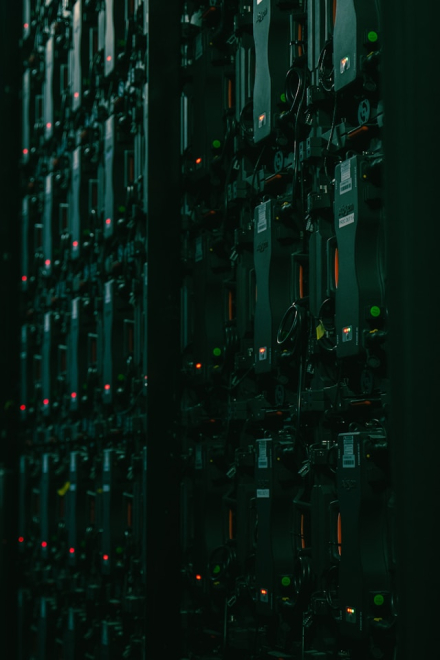- Change theme
Supercharging Database Performance with Server & Enterprise SSDs

For enterprises relying on data-driven operations, database performance is the backbone of business efficiency.
20:39 22 June 2025
For enterprises relying on data-driven operations, database performance is the backbone of business efficiency. Whether you're running customer relationship management (CRM) systems, inventory platforms, or financial records, slow queries and lagging transaction speeds can severely impact your bottom line.
One of the most effective ways to dramatically improve database speed and reliability is through upgrading to Server & Enterprise SSDs. In this article, we’ll explore how SSDs outperform traditional HDDs in database environments, the best SSD types for various database workloads, and why businesses across the U.S. trust La Sysco for their Server Components and SSD infrastructure.
The Performance Gap: HDD vs. SSD in Databases
Databases are I/O-intensive by nature. They constantly read and write data, especially under workloads like:
- Online Transaction Processing (OLTP)
- Data Warehousing
- Analytics & Reporting
- Log Management
- High-Concurrency User Applications
Traditional HDDs, which rely on spinning platters, are limited to around 100–150 IOPS (input/output operations per second). In contrast, enterprise SSDs deliver anywhere from 10,000 to over 1,000,000 IOPS, depending on the interface.
Key advantages of SSDs in database environments:
- Ultra-fast read/write speeds
- Sub-millisecond latency
- Consistent performance under load
- Higher endurance for write-heavy tasks
- Better concurrency support for simultaneous queries
SSD Use Cases Across Popular Database Platforms
MySQL / MariaDB
Workloads: E-commerce platforms, SaaS apps, analytics
- Benefit from low-latency NVMe SSDs during read-heavy SELECT queries
- Write-intensive transactions (e.g., order processing) gain reliability with power-loss protection
PostgreSQL
Workloads: Geospatial systems, BI tools, open-source ERP
- Leverage SAS SSDs for balanced performance in RAID arrays
- WAL (write-ahead logging) directories greatly benefit from SSD caching
SQL Server
Workloads: Enterprise ERPs, Microsoft stack apps
- Use NVMe SSDs for TempDB and transaction logs
- SSDs minimize wait stats and reduce deadlocks in high-concurrency environments
Oracle DB
Workloads: Large enterprise data warehouses, financial systems
- Benefit from multi-SSD configurations in RAID10 or striped volumes
- Write-intensive data files and undo logs achieve better IOPS with high-endurance SSDs
Choosing the Right SSD Type for Your Database
|
SSD Interface |
Performance |
Endurance |
Best Use |
|
SATA SSD |
Good |
Moderate |
Development, test databases, backups |
|
SAS SSD |
Very Good |
High |
Mid-size transactional DBs, RAID setups |
|
NVMe SSD |
Excellent |
Very High |
OLTP, analytics, heavy concurrent queries |
For example, placing your primary database on NVMe, logs on SAS, and backups on SATA ensures a balanced cost-performance architecture.
SSD Optimization Tips for Database Workloads
Use Dedicated SSDs for Logs
Separate your transaction logs onto a dedicated SSD. This prevents log writes from interfering with read operations, leading to faster commits and reduced lock contention.
Leverage SSDs for Temp Storage
Databases create temporary tables for sorting, joins, and complex queries. Locating temp directories on SSDs dramatically improves query performance.
Align with RAID Best Practices
Use RAID10 for performance and redundancy. Avoid RAID5 for write-heavy databases due to parity overhead. SSDs in RAID10 setups can provide both IOPS performance and data protection.
Monitor Wear Levels
Enterprise SSDs include SMART monitoring to track wear, temperature, and write cycles. Set alerts to replace drives before failure, ensuring high availability.
Case Study: SSDs Boost OLTP Transaction Speed by 8x
A financial services company running a high-volume PostgreSQL database faced slow transaction processing during peak hours. After replacing their legacy RAID5 HDD setup with NVMe SSDs in RAID10, they experienced:
- 8x increase in transactions per second (TPS)
- 92% reduction in query response time
- Zero unplanned downtime over 12 months
- 3-month ROI due to reduced latency and hardware consolidation
Why Choose La Sysco for Your Database SSD Infrastructure?
At La Sysco, we specialize in enterprise-grade Server & Enterprise SSDs optimized for mission-critical workloads like databases. We help IT departments choose SSDs that align with performance needs, endurance expectations, and infrastructure compatibility.
Why businesses trust us:
- Verified SSDs from top enterprise brands
- Power-loss protection and high endurance ratings
- Support for SAS, SATA, and NVMe interfaces
- Guidance on RAID deployment, wear-leveling, and firmware updates
- Reliable U.S. logistics and inventory availability
- Certified sandisk authorized distributor
Our storage experts provide real-world recommendations that ensure your databases are running on the most efficient and secure foundation.
Final Thoughts
In a world where milliseconds mean money, upgrading to the right Server & Enterprise SSDs can revolutionize how your databases operate. Whether you're handling thousands of transactions per second or powering an analytics engine, SSDs reduce latency, boost reliability, and protect your data.
For future-proof database architecture and maximum ROI, trust La Sysco—your partner for reliable Server Components, database-ready SSDs, and expert-driven storage strategies.
